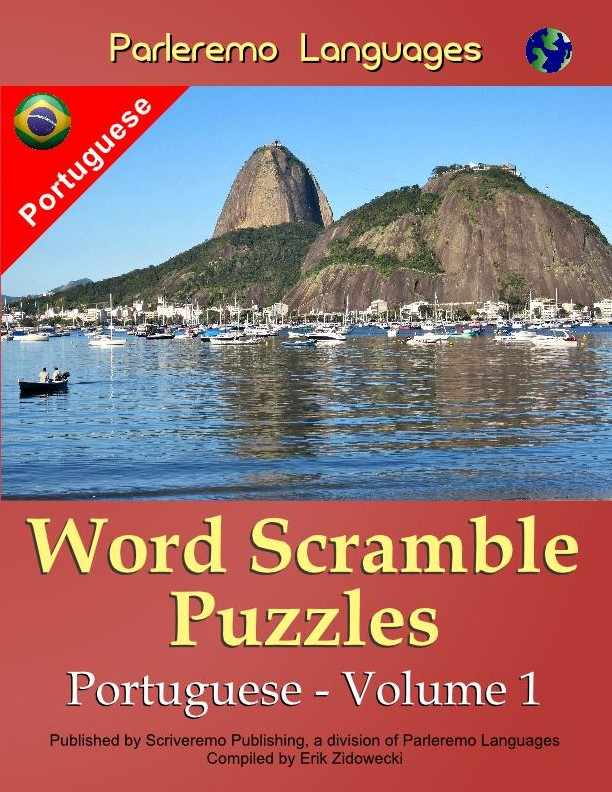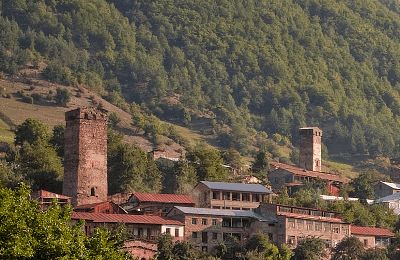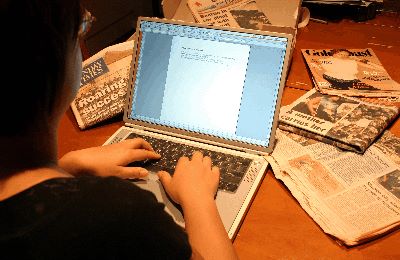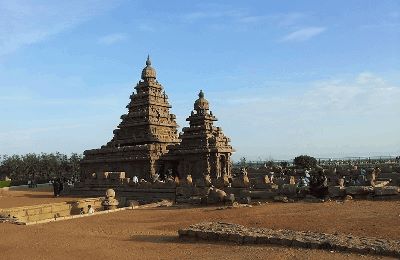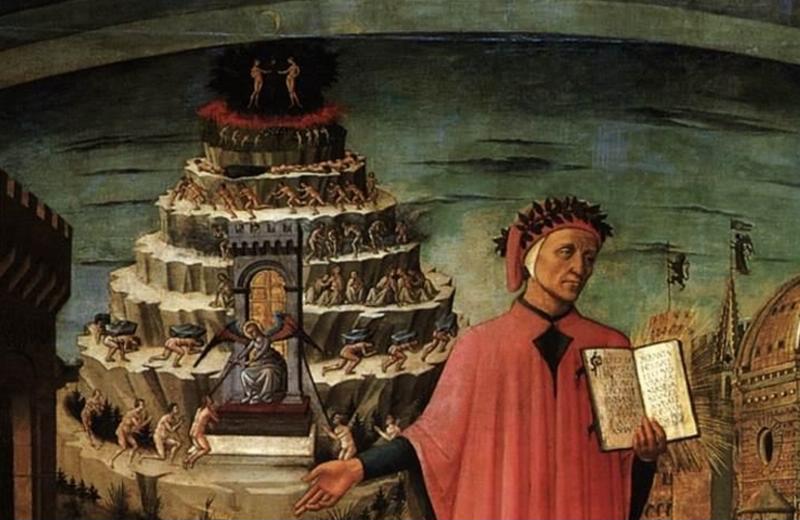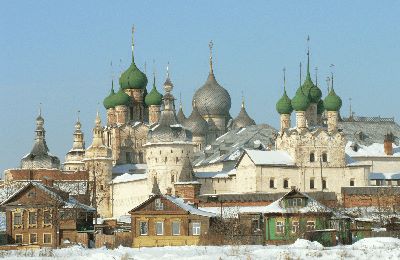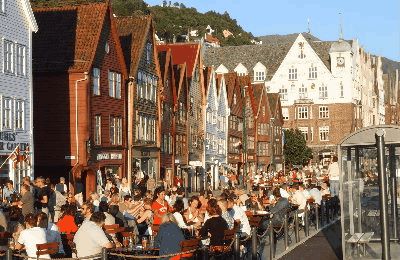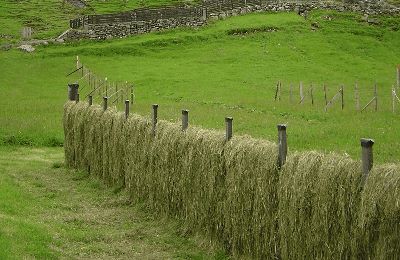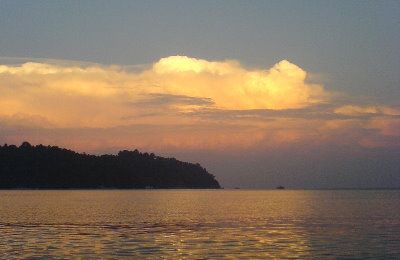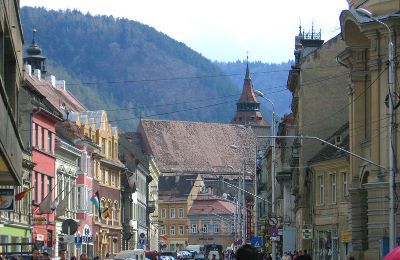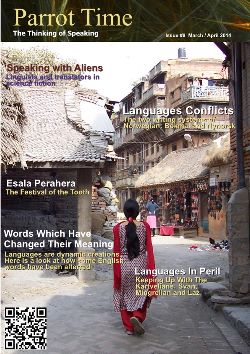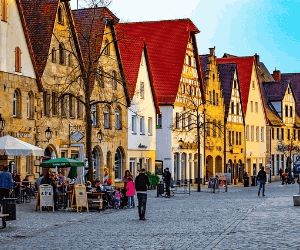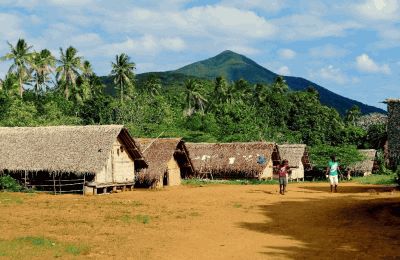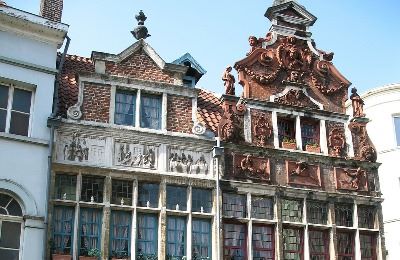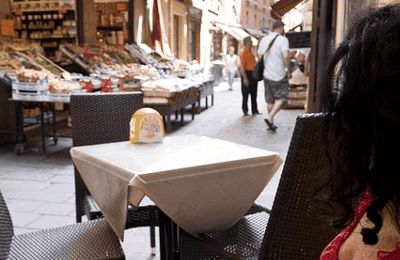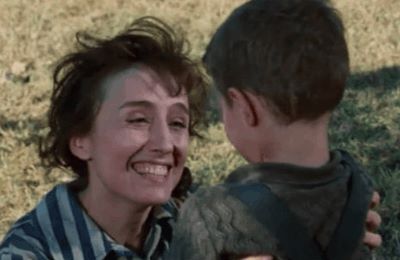Word on the Streets
Indonesian Innovators

| The streets of Parleremo are named after famous writers for the language of each quarter. This is where we take a quick look at why they famous. | |
Jalan Navis | |
Ali Akbar Navis 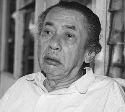 Ali Akbar Navis was born in Padang Panjang, West Sumatra on November 17, 1924. Better known by the name of AA Navis, he was a leading writer, humorist and humanist in Indonesia. Not only did he produce a large number of publications, but he also worked as a teacher for other writers during his lifetime. At a young age, Navis expressed creativity and talent. Before he started his writing career, he became an accomplished musician with both viola and flute. He also became skilled as a painter. He worked as the head of production at a Japanese-owned porcelain factory after graduating from the Dutch language teachers' school, Indonesisch Nederlandsche School (INS), in Kayu Tanam in 1945. Navis began writing in 1950, but it took a few years for his work to be noticed. When it was, he was given a position on the Central Sumatra Cultural Committee from 1953-55. His English language skills also became noticed and he was often asked to help foreign scholars who were studying Minangkabau (an ethnic group Navis was part of) culture. His first real break into the literary world came with his short story Surau Kami in 1955. It was considered very bold in the way it criticized the pious people who neglected the poor and was voted in the literary magazine Kisah to be one of the best three stories of the year. It was later released in a collection of his short stories also named Surau Kami in 1956. The collection has since been translated into Japanese, English and German. |
List of Books and Novels
• Antologi Lengkap Cerpen A.A. Navis , 2005 • Gerhana, novel , 2004 • Bertanya Kerbau Pada Pedati , 2002 • Cerita Rakyat dari Sumatra Barat 3 , 2001 • Kabut Negeri si Dali , 2001 • Dermaga Lima Sekoci , 2000 • Jodoh , 1999 • Yang Berjalan Sepanjang Jalan , 1999 • Cerita Rakyat dari Sumatra Barat 2 , 1998 • Filsafat dan Strategi Pendidikan M. Sjafei: Ruang Pendidik INS Kayutanam , 1996 • Otobiografi A.A. Navis: Satiris dan Suara Kritis dari Daerah , 1994 • Surat dan Kenangan Haji , 1994 • Cerita Rakyat dari Sumatra Barat , 1994 • Hujan Panas dan Kabut Musim , 1990 • Pasang Surut Pengusaha Pejuang, Hasjim Ning autobiography , 1986 • Alam Terkembang Jadi Guru, minangkabau culture , 1984 • Di Lintasan Mendung , 1983 • Dialektika Minangkabau (editor) , 1983 • Dermaga dengan Empat Sekoci, poets , 1975 • Saraswati: Si Gadis dalam Sunyi, novel , 1970 • Kemarau , 1967 • Bianglala , 1963 • Hudjan Panas , 1963 • Robohnya Surau Kami , 1955 Literary awards • Kincir Mas prize from Radio Netherlands for Jodoh, 1975 • Femina magazine prize for literature for Kawin in 1979 • Ministry of Education and Culture National Art Award 1988 • Ministry of Education and Culture National Literary Award 1992 • Thai-government awarded South East Asian Writer Award, 1992 |
|
During his lifetime, Navis created a number of monumental works in the areas of culture and art. As a teacher, he inspired a new generation of writers. He always spoke and wrote frankly, earning him the nickname "The Mocker", for he did not hold back his opinions. One of his criticisms was the way children were taught in the educational system. He said that, from elementary school to college, students were only given the chance to receive information from their teachers, but were not taught to speak their own minds. This caused them to not be good at writing, because one needs an open mind for that. They were not taught to read because reading gives people a chance for comparison. By the time they arrived in college, they were not good at reading or writing, and this contributed to the decline of each generation. He criticized the education models, saying they were created as a strategy to keep people unable to think for themselves, and that this must be resisted and changed. He viewed literature as a means of doing this, of helping people to think critically and understand the concepts of life. According to Navis, the most important thing for a writer is whether the work is durable or not. To him, writing was a tool.He claimed that he wrote with one vision, not with the purpose of seeking fame. Fame found him, though. Even as he taught other writers, he produced his own short stories, novels, poetry, children’s stories, radio plays and essays. Navis produced over 65 works of literature in multiple forms. He wrote 22 books, plus five anthologies with other writers and eight foreign anthologies. Add to that, he produced 106 papers on a variety of academic activities at home and abroad which were collected into the book A Walk Along the Way. Navis suffered for many years with heart complications, asthma and diabetes. He was still writing and very active in society, however, up until his death on March 22nd, 2003 in Padang. | |
Jalan Wijaya | ||
Putu Wijaya 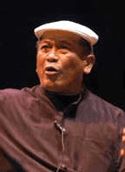 I Gusti Ngurah Putu Wijaya was born in Tabanan, Bali, in April, 1944, and is normally known as simply Putu Wijaya. He is a well known and versatile Indonesian author who has written numerous plays, short stories, essays, novels, film scripts and soap operas. He has also received a number of literary prizes for his works. Putu Wijaya was born the youngest of eight children, with three of them from one father and five from another. While in primary school, he was already reading classic literature by Anton Chekhov and William Shakespeare. His love of literature came from the extended family of the large housing complex he lived in, for most of them read regularly. While Putu Wijaya's father was hoping he would become a doctor, he instead found himself drawn to history, language and geography. His love for the theatre came in high school when he was part of a performance of Anton Checkov's play The Bear. He has been writing since junior high, and his first short story, Etsa ("Etching"), was published Suluh Indonesia, Bali. His works later appeared in the Fajar column of Mimbar Indonesia magazine, Minggu Pagi and Majalah Djaya. |
Selected List of Works
Short Stories • Gres, Jakarta: Balai Pustaka, 1982 • Blok, Jakarta: Pustaka Firdaus, 1994 • Darah, Jakarta: Balai Pustaka, 1995 • Zig Zag, Jakarta: Pustaka Firdaus, 1996 • Tidak, Jakarta: Pabelan Jayakarta, 1999 Drama • Dar-Der-Dor, Jakarta: Grasindo, 1996 Novels • Bila Malam Bertambah Malam, Jakarta: Pustaka Jaya, 1971 • Telegram, Jakarta: Pustaka Jaya, 1973 • MS, Jakarta, 1975 • Ratu, Jakarta, 1977 • Sah, Jakarta, 1977 • Stasiun, Jakarta, Pustaka Jaya, 1977 • Tak Cukup Sedih, Jakarta, 1977 • Keok, Jakarta: Pustaka Jaya, 1978 • Sobat, Jakarta: Sinar Harapan, 1981 • Lho, Jakarta: Balai Pustaka, 1982 • Nyali, Jakarta: Balai Pustaka, 1983 • Dor, Jakarta: Balai Pustaka, 1986 • Pol, Jakarta: Gramedia, 1987 • Teror, Jakarta: Pustaka Jaya, 1991 • Kroco, Jakarta: Pustaka Firdaus, 1995 • Byar Pet, Jakarta: Pustaka Firdaus, 1995 • Aus, Jakarta: Grasindo, 1996 • Tetralogi Dangdut, 2008 Poetry • Dadaku adalah Perisaiku, Denpasar: Lesiba, 1974 | |
|
In high school, he performed in and directed his own drama group, and later joined the Bengkel Teater ("Theatre Workshop") from 1967 to 1969. He then joined the Teater Kecil di Jakarta ("Little Theatre in Jakarta"). His play Lautan Bernyanyi ("Chanting Ocean") was awarded third place in a drama-writing contest of the Indonesian National Theater Development Agency in 1969. Putu Wijaya moved to Jakarta and began his career as a writer when he was working as a journalist for Tempo and Zaman. He joined Teater Kecil and Teater Populer to keep up his interest in drama. His novels are often published in magazines like Kartini, Femina and Horison. As a screenwriter, he has twice won an "Image in Indonesian Film Festival (FFI)" for Perawan Desa ("Virgin Village", 1980) and Kembang Kertas ("Flower Paper", 1985) He has also had fellowships to study kabuki in Japan and a Fullbright Scholarship so he could teach Indonesian theatre at universities in the United States. Putu Wijaya is still a major figure in the promotion of Indonesian literature and culture, and his numerous works have been translated into many languages, including English, Arabic, Dutch, Russian, French, Japanese and Thai. | ||
Jalan Alisjahbana | ||
Sutan Takdir Alisjahbana 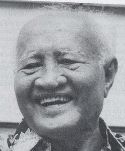 Sutan Takdir Alisjahbana was born in Natal, North Sumatra on February 11, 1908. He was a writer and expert on Indonesian grammar and is recognized as one of Indonesian literature's leaders, especially during its move toward independence. Alisjahbana believed that Indonesia could learn from the values of western civilization and he remained a great promoter of modernism all during his life. Alisjahbana's mother was Puti Samiah, a hereditary Minangkabau who had settled in Natal, North Sumatra. She was also a descendant of Rajo Putih, who was one of the founding kings of the Kerajaan Inderapura. Even as a child, Alisjahbana loved books, and it was common to see a stack of books which he had quickly read and discarded when he finished. He attended elementary school at the Hollandsch Inlandsche School in Bengkulu from 1915 to 1921, then went on to study at the Kweekschool (Training School) in Kota Bukittinggi and, later, Hogere Kweekschool in London. He finally graduated from Hoofdacte Cursus in Jakarta in 1933, which was highest qualification for teachers in the Dutch East Indies at the time. During his time of studying law, linguistics, literature and philosophy, Alisjahbana began creating his own works. His first novel, Tak Putus Dirundung Malang ("Misfortune without End") was published by Balai Pustaka in 1929 when he was just 21. This was followed by other works. His novel Dian Tak Kunjung Padam was published in 1932. Other novels were Layar Terkembang (1936) and Anak Perawan di Sarang Penyamun (1940). His Tatabahasa Baru Bahasa Indonesia ("A New Grammar of the Indonesian Language") came out in 1936 and it is still used today. He also had two books of poetry, Puisi Lama and Puisi Baru, published in 1941 and 1946, respectively. |
Selected List of Works
• Tak Putus Dirundung Malang, 1929 • Dian Tak Kunjung Padam, 1932 • Tebaran Mega, 1935 • Tatabahasa Baru Bahasa Indonesia, 1936 • Layar Terkembang, 1936 • Anak Perawan di Sarang Penyamun, 1940 • Puisi Lama, 1941 • Puisi Baru, 1946 • Pelangi, 1946 • Pembimbing ke Filsafat, 1946 • Dari Perjuangan dan Pertumbuhan Bahasa Indonesia, 1957 • The Indonesian language and literature, 1962 • Revolusi Masyarakat dan Kebudayaan di Indonesia, 1966 • Kebangkitan Puisi Baru Indonesia, 1969 • Grotta Azzura, 1970 & 1971 • Values as integrating vorces in personality, society and culture, 1974 • The failure of modern linguistics, 1976 • Perjuangan dan Tanggung Jawab dalam Kesusastraan, 1977 • Dari Perjuangan dan Pertumbuhan Bahasa Indonesia dan Bahasa Malaysia sebagai Bahasa Modern, 1977 • Perkembangan Sejarah Kebudayaan Indonesia Dilihat dari Segi Nilai-Nilai, 1977 • Lagu Pemacu Ombak, 1978 • Amir Hamzah Penyair Besar antara Dua Zaman dan Uraian Nyanyian Sunyi, 1978 • Kalah dan Menang, 1978 • Menuju Seni Lukis Lebih Berisi dan Bertanggung Jawab, 1982 • Kelakuan Manusia di Tengah-Tengah Alam Semesta, 1982 • Sociocultural creativity in the converging and restructuring process of the emerging world, 1983 • Kebangkitan: Suatu Drama Mitos tentang Bangkitnya Dunia Baru, 1984 • Perempuan di Persimpangan Zaman, 1985 • Seni dan Sastra di Tengah-Tengah Pergolakan Masyarakat dan Kebudayaan, 1985 • Sajak-Sajak dan Renungan, 1987. • Pemikiran Islam Dalam Menghadapi Globalisasi Dan Masa Depan Umat manusia, 1992 | |
|
Alisjahbana wrote dozens of books over the course of his life, mostly on literature and linguistics. Layar Terkembang ("Sail") is one of his most famous. In it, Alisjahbana put his ideas for advancing society, especially the idea of promoting the role of women leaders through the character of Tuti, a forward-thinking woman who was active in the women's movement. Among his friends were Indonesian poet Amir Hamzah and Indonesian author Armijn Pane, and together they founded and edited Poedjangga Baroe ("The New Writer"), a journal which contained the best work of many writers. It was first published in 1933 and ran for nine years. When the Japanese occupation began in 1942, the magazine stopped publication. In 1953, Alisjahbana became the editor for another publication, Konfrontasi ("Confrontation"). During the Japanese occupation, Alisjahbana was appointed head of the Indonesian Language Committee. There, he pushed to modernize Indonesian so it could be a unifying national language of the nation. After World War II ended, he became a lecturer at a number of universities, including the University of Indonesia (1946-1948), the National University (1950-1958), Andalas University (1956-1958), and Malaya University (1963-1968). Despite all his achievements, Alisjahbana never saw his greatest wish realized: to make Bahasa Melayu, or simply Malay, the language of instruction in the Southeast Asian region. He died in Jakarta on July 17, 1994. PT | ||
| Word on the Streets - Indonesian Innovators | ||||||||||||||||||||||
| Writer: | Sofia Ozols | |||||||||||||||||||||
| Images: | ||||||||||||||||||||||
| ||||||||||||||||||||||
| Sources: | ||||||||||||||||||||||
| ||||||||||||||||||||||
All images are Copyright - CC BY-SA (Creative Commons Share Alike) by their respective owners, except for Petey, which is Public Domain (PD) or unless otherwise noted.
|
Searching for language resources? Scriveremo Publishing, has lots of fun books and resource to help you learn a language. Click the link below to see our selection of books, availlable for over 30 langauges!
| |
comments powered by Disqus
